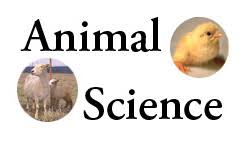A study was conducted to evaluate the quality of yoghurt produced from cow's milk and some tropical fruits such as lemon, grape, pawpaw, orange and synthetic pineapple as flavourants. The milk 18L was clarified, homogenised, pasteurized at 800C for 3minutes and then cooled to 420C and inoculated. The inoculated milk was divided into six treatments reconstituted synthetic pineapple flavour, fruit juices grape, lemon, orange, pawpaw and plain. The flavourants were added at 200 ml litre of the inoculated milk. Each yoghurt was replicated thrice and incubated for 14hrs at 430C. Product was then refrigerated for 14days and the physico chemical and rheological qualities of the samples were analyzed and determined at different storage days 1, 7 and 14 . The completely randomized design in a 4x3 factorial arrangement was adopted. The results obtained showed that water holding capacity WHC was highest 42.69 at the 7th day, highest viscosity 68144.28mPa s and syneresis 38.58 were recorded at day 1. Treatment effect revealed that grape yoghurt had the highest WHC 46.21 , viscosity 97053.89 mPa s and least syneresis 11.87 . Treatment and storage effects showed that grape yoghurt at day 7 had the highest 52.17 WHC, viscosity 98540.33mPas at day 1and least syneresis 0.23 at day 14. The highest moisture 85.11 , ash 1.52 , fat 2.43 , protein 7.90 and carbohydrate 11.86 contents were observed in orange, lemon, plain, orange and grape yoghurts respectively. The pH, lactic acid, vitamin C, cholesterol values decreased as storage days increased. Orange yoghurt had higher concentration of Lactic acid and vitamin C concentrations. At days 7 and 14 of storage, the synthetic pineapple flavoured yoghurt was most acceptable. Conclusively, the nutritional qualities of yoghurt could be enhanced using tropical fruits, however, yoghurt should not be stored beyond 7days in order to sustain the nutrient value.
by Ibhaze, Gladys Abiemwense | Akinbanjo, Daniel Taye | Jacob, Grace Temitayo "Evaluation of Set Yoghurt Quality Enhanced With Selected Indigenous Fruits"
Published in International Journal of Trend in Scientific Research and Development (ijtsrd), ISSN: 2456-6470, Volume-5 | Issue-6 , October 2021,
URL: https://www.ijtsrd.com/papers/ijtsrd46373.pdf
internationaljournalsinengineering, callforpaperengineering, ugcapprovedengineeringjournal













